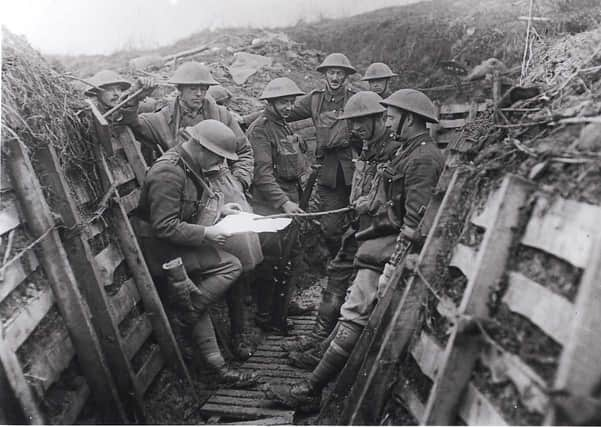The trauma of disaster takes decades to be understood, but positive things come from it so there is hope


In the painting, weary soldiers and traumatised civilians are profiled, beside a solitary altar wall remnant of an obliterated battlefield church.
Zeppelin or military balloon fluffily hangs over the scene of total carnage and devastation below.
Advertisement
Hide AdAdvertisement
Hide AdThe First World War era exposed how science could unleash various killing machines, and how we could use technology to record the depravity being inflicted on each other.


Is the crucified figure before the altar wall transcending the human chaos below, or oblivious to it; and do the averted gazes of the figures beneath the crucifix, leave us wondering if these very questions have been rendered irrelevant? Matthew Arnold (1822-1888) wrote: ‘Nor certitude, nor peace, nor help for pain; And we are here as on a darkling plain Swept with confused alarms of struggle and flight, Where ignorant armies clash by night’.
While studying for a master’s degree some years ago, a module on the paradigm shift in European spiritual practice examined the broader impact of World War I. We popularly imagine a collapse of traditional religion in Britain from the 19th century onwards; but in reality, those esoteric questions around human origins or evolution, may have had far less impact than we imagine.
Matthew Arnold’s sentiments in his famous poem Dover Beach probably struck a greater harmony with the UK population when the later trauma of World War I challenged traditional religious values.
Advertisement
Hide AdAdvertisement
Hide AdThe trauma of World War I on individual soldiers took many decades to be sensitively understood. Is there is a wider forgotten national trauma, that should inform our current political leaders, when considering future battlefield enterprises or deployments?
William Orpen’s painting captures a generational trauma that makes the coronavirus threat seem tame.
Our understanding of Post Traumatic Stress Disorder (PTSD) has developed, but do other subtle legacies of World War I remain unseen to us and our leaders?
Orpen’s painting reassures us that British democracy and civil life have survived greater terrors than Covid.
Advertisement
Hide AdAdvertisement
Hide AdIndeed, positive things sometimes come eventually from conflict, trauma, disease or disasters.
One of the great paradoxes of life is that a good many people turn to God and to the Gospel at time of trauma.
War and pestilence, perhaps reduces the population of agnostics disproportionately, as we are all forced into one of two corners — atheism or theism.
Dr James Hardy, Belfast BT5